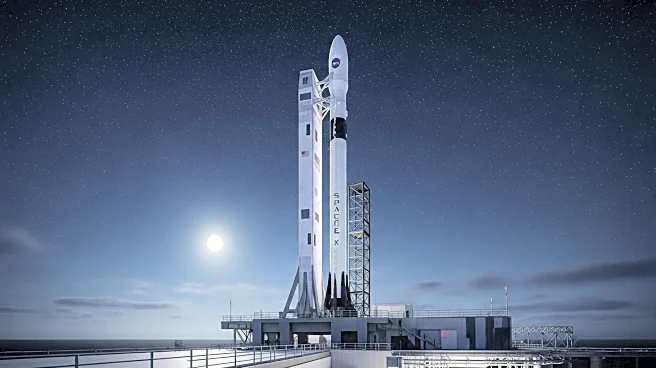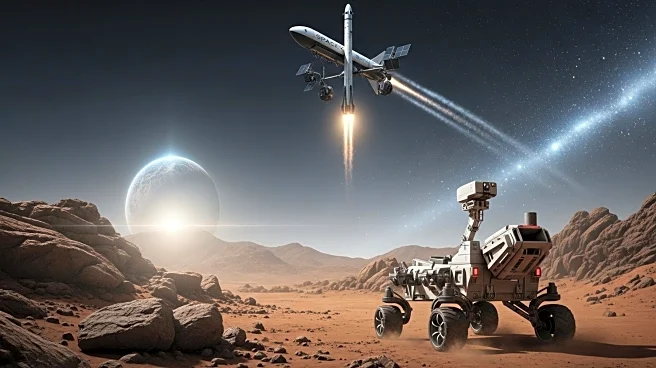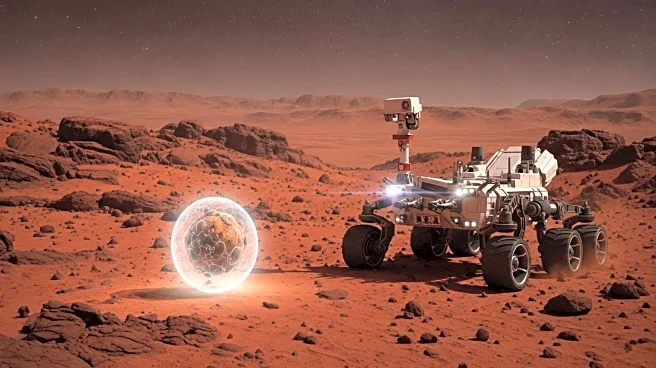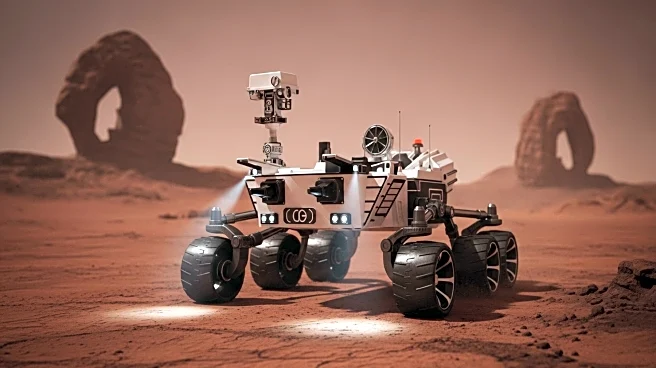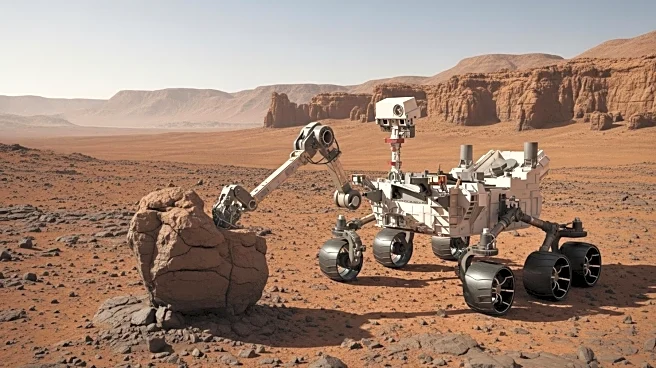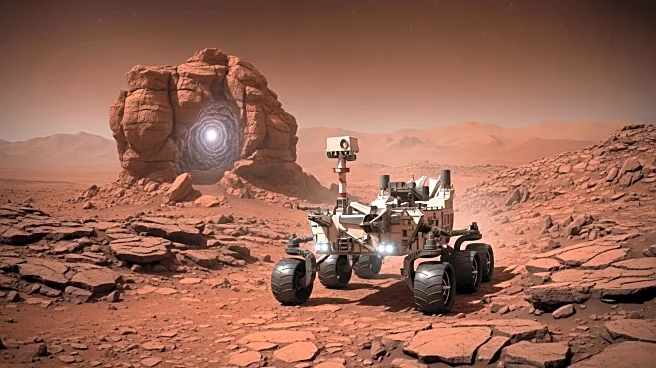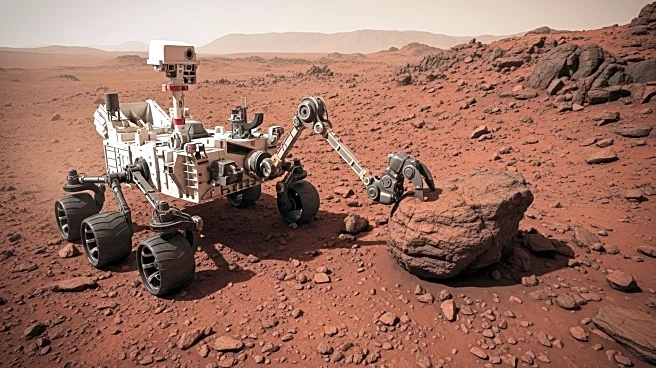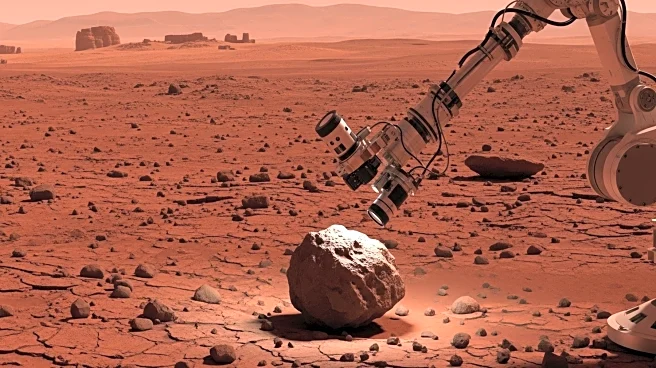What's Happening?
NASA and SpaceX are at the forefront of significant developments in space exploration and technology. SpaceX recently achieved a milestone with its 300th Starlink mission, launching 24 internet satellites, bringing the total to over 8,300 active satellites. This launch was part of SpaceX's 115th mission of the year, showcasing its rapid launch capabilities. Meanwhile, NASA is focusing on its Artemis program, aiming to return humans to the Moon by 2025. The Artemis II mission, a crewed lunar flyby, remains on track despite budgetary challenges. NASA's Perseverance rover has also detected potential biosignatures on Mars, sparking interest in the possibility of ancient microbial life. These developments highlight the U.S.'s commitment to maintaining its leadership in space exploration amidst growing competition from countries like China.
Why It's Important?
The advancements by NASA and SpaceX are crucial for maintaining U.S. leadership in space exploration and technology. SpaceX's ability to rapidly deploy satellites enhances global internet connectivity and strengthens U.S. technological influence. NASA's Artemis program is pivotal in re-establishing a human presence on the Moon, which is strategically important as other nations, particularly China, accelerate their lunar ambitions. The potential discovery of biosignatures on Mars could revolutionize our understanding of life beyond Earth, positioning the U.S. at the forefront of astrobiological research. These efforts not only bolster national pride and scientific achievement but also have significant implications for international collaboration and competition in space.
What's Next?
NASA and SpaceX are expected to continue their aggressive pursuit of space exploration goals. NASA is preparing for the Artemis II mission, with international partnerships playing a key role. The agency is also addressing budgetary constraints that could impact future missions. SpaceX, with regulatory approval to increase its launch rate, is poised to support both commercial and government missions at an unprecedented pace. The findings from the Perseverance rover will likely lead to further Mars exploration missions, potentially involving sample return missions to confirm the presence of past life. These initiatives will require continued innovation and collaboration to overcome technical and financial challenges.
Beyond the Headlines
The developments in U.S. space exploration reflect broader geopolitical dynamics, where space is increasingly seen as a domain of strategic importance. The competition with China for lunar exploration underscores the geopolitical stakes involved. Additionally, the potential discovery of life on Mars raises ethical and philosophical questions about humanity's place in the universe. The rapid pace of satellite deployment by companies like SpaceX also prompts discussions about space traffic management and the sustainability of space environments. These issues highlight the need for comprehensive policies and international cooperation to ensure the long-term benefits of space exploration.
